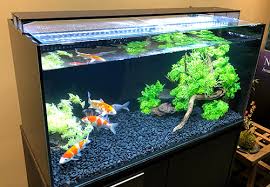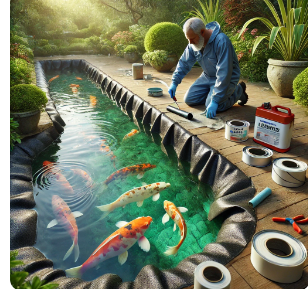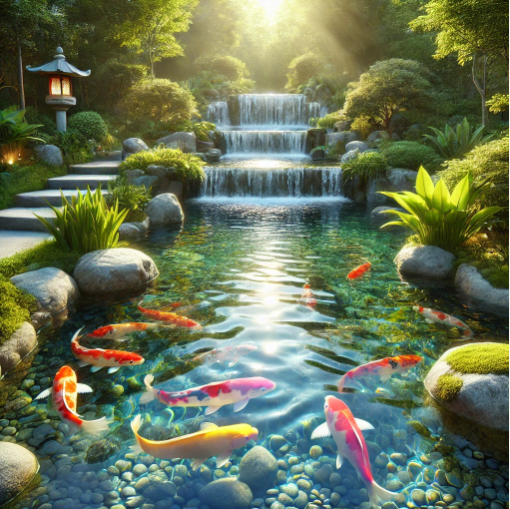Koi fish are one of the most fascinating species in the aquatic world, admired for their vibrant colors and long lifespans. If you’re interested in breeding koi, understanding their breeding cycles, egg development, and care is essential.
In this guide, we’ll walk you through everything you need to know about koi carp eggs, from spawning to hatching and raising healthy fry.
1. When Do Koi Fish Breed?
Koi fish naturally spawn in spring, when water temperatures rise to 65–75°F (18–24°C). In a well-maintained pond or controlled environment, you can encourage breeding by gradually increasing the water temperature.
Signs That Koi Are Ready to Breed
✔ Males become more aggressive, chasing females around the pond.
✔ Females appear fuller-bodied, indicating they are carrying eggs.
✔ Increased activity in the pond, with splashing and nudging behaviors.
📌 Tip: Koi typically spawn early in the morning, so keeping an eye on them at this time is crucial.
2. The Koi Breeding Cycle
The breeding cycle of koi fish follows a predictable pattern:
Step 1: Pre-Spawning Behavior
As temperatures rise, males start chasing and nudging females to encourage them to release eggs.
Step 2: Spawning (Egg Laying & Fertilization)
- The female koi lays thousands of eggs onto surfaces like plants, rocks, or spawning mats.
- The male koi fertilizes the eggs by releasing milt (sperm).
- Eggs stick to surfaces and begin developing.
📌 Important: After spawning, adult koi may eat the eggs, so it’s recommended to remove the eggs or separate the adult koi.
Step 3: Egg Incubation
- The fertilized eggs take about 4–7 days to hatch, depending on water temperature.
- The ideal temperature for hatching is around 70°F (21°C).
- The eggs will appear translucent, and you may see tiny fish developing inside before hatching.
Step 4: Hatching & Fry Development
- Once the eggs hatch, the baby koi (fry) will cling to surfaces for the first 48–72 hours.
- After absorbing their yolk sac, fry become free-swimming and begin looking for food.
📌 Tip: If water temperatures drop below 60°F, hatching may slow down or stop completely.
3. How to Identify Fertilized vs. Unfertilized Eggs
Not all eggs will be viable. It’s important to identify healthy vs. non-viable eggs to reduce fungus growth.
| Fertilized (Healthy) Eggs | Unfertilized (Bad) Eggs |
| Clear, slightly yellowish | White, opaque, or milky |
| Small black dots inside (developing eyes) | Cloudy and fuzzy (fungal growth) |
| Attached to plants or mats | May float or sink without attachment |
📌 Tip: Remove unfertilized or fungus-covered eggs to prevent contamination of healthy ones.
4. How to Protect Koi Eggs & Increase Hatch Rate
Koi eggs are delicate, and proper care is necessary to ensure a high hatch rate.
A. Using a Separate Breeding Tank or Pond
✔ Move eggs to a safe environment away from adult koi.
✔ Keep water clean and oxygenated using gentle filtration.
✔ Maintain stable temperatures (65–75°F) for optimal hatching.
B. Adding Aeration & Water Flow
✔ Use gentle aeration (air stones or sponge filters) to improve oxygen levels.
✔ Ensure good water circulation without strong currents.
C. Preventing Fungal Infections on Eggs
✔ Remove dead eggs to stop fungus from spreading.
✔ Some breeders use methylene blue or salt baths to protect the eggs from infections.
📌 Tip: Overcrowding can lead to lower oxygen levels, reducing hatch rates. Provide enough space for eggs to develop properly.
5. Raising Koi Fry: Feeding & Care
After hatching, koi fry need special care to grow into healthy adult fish.
A. First 2–3 Days (Yolk Sac Phase)
- Fry don’t need food as they absorb their yolk sac.
- Keep the water clean and limit disturbances.
B. First Week (Initial Feeding)
- Start feeding infusoria, liquid fry food, or finely crushed flakes.
- Provide food multiple times a day in small amounts.
C. 2–4 Weeks Old (Growth Stage)
- Introduce baby brine shrimp, daphnia, or powdered koi food.
- Monitor growth rate and ensure water quality remains stable.
D. 1–2 Months Old (Color Development)
- By this stage, fry begin showing color and pattern changes.
- Upgrade their diet to small pellets or crushed high-protein food.
📌 Tip: Some koi may grow faster than others, so separate larger fry from smaller ones to prevent competition for food.
6. Common Problems in Koi Breeding
Breeding koi is rewarding, but it comes with challenges. Here’s how to avoid common mistakes:
| Problem | Solution |
| Eggs being eaten by adult koi | Remove eggs or use a breeding net. |
| Low hatch rates | Maintain stable temperatures & aeration. |
| Egg fungus | Remove white eggs and use anti-fungal treatment. |
| Fry not growing properly | Provide frequent, high-protein feedings. |
| Water quality issues | Change water regularly and use a gentle filter. |
7. How Long Does It Take for Koi to Mature?
Koi grow at different rates, but good water conditions and a proper diet help them grow faster and healthier.
| Age | Average Size |
| 1 month | 1–2 inches |
| 3 months | 3–4 inches |
| 6 months | 6–8 inches |
| 1 year | 8–12 inches |
| 3 years | 12–20 inches |
| 5+ years | 24–36 inches |
📌 Tip: High-quality food and a spacious pond can help koi reach their full potential faster.
Final Thoughts
Breeding koi fish is a rewarding experience that requires dedication and patience. By understanding the koi breeding cycle, how to care for their eggs, and raising healthy fry, you can successfully grow a beautiful, thriving koi pond.
Key Takeaways
✔ Koi breed in spring when temperatures reach 65–75°F.
✔ Female koi lay thousands of eggs, and males fertilize them.
✔ Separate eggs to protect them from being eaten.
✔ Maintain good water quality to prevent fungal infections.
✔ Feed fry nutrient-rich food and provide a safe environment.
With the right knowledge and preparation, you can successfully hatch and raise healthy koi fish in your pond! 🐠✨
📌 Do you have experience breeding koi? Share your tips in the comments below!




